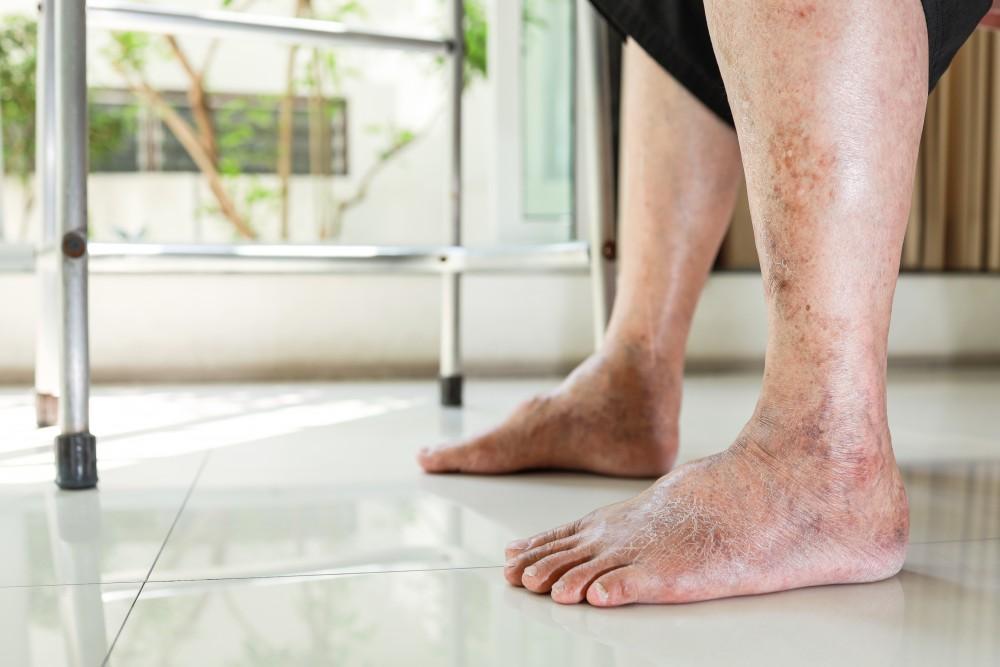Swelling might not seem like a big deal, but some types of swelling can be quite serious. Without treatment, you could wind up with serious health complications, including infections, or it could be a sign of lymphedema symptoms. Here’s how we can help.
Swelling can happen for lots of reasons, including insect bites, minor burns, and even vaccinations. In these instances, swelling typically clears up relatively quickly as the injury heals.
But sometimes, swelling happens even without a triggering event, like a sprained ankle. That type of swelling could be a sign of lymphedema, a potentially serious medical problem in which fluid builds up inside your tissues.
Manjulatha Badam, MD, CWSP, UHM, and the team at Vayu Advanced Wound Clinic and Hyperbaric provide state-of-the-art treatment for lymphedema for patients in and around San Antonio, Texas.
If you have unexplained swelling, read on as Dr. Badam explains what you should know about lymphedema and its treatment.
Why does lymphedema happen?
Your lymphatic system is a large fluid transport system that plays a key role in immunity and other key functions. Like your circulatory system, your lymphatic system extends throughout your body, producing, collecting, and draining fluid from every part of your body.
Lymphedema happens when your lymphatic system is damaged or blocked and unable to work the way it’s supposed to. As a result, lymphatic fluid backs up into your tissues, causing swelling that can be very uncomfortable.
Lymphedema most often affects the legs, feet, arms, and hands, but it can occur in other areas, too, including your belly and your trunk. Sometimes, lymphedema begins after an injury to these areas that winds up damaging the lymph system or interfering with its drainage function.
Other possible causes of lymphedema include:
- Surgery
- Cancer treatment
- Infections
- Problems with your heart
- Obesity
Conditions such as eczema, vascular disease, or arthritis can also be associated with lymphedema.
Lymphedema symptoms

While swelling is the key feature of lymphedema, you can have other symptoms, too, like:
- Discomfort in the area of swelling
- Tight feelings in your skin
- Restricted movements in an affected limb
- Pain when moving an affected limb
- Numbness or tingling in the area
- Thickening of the skin over the area of swelling
- Skin infections that won’t heal
Depending on where the lymphedema is located, swelling may make it difficult or impossible to fit into your clothes or shoes.
Prompt treatment of lymphedema is important for relieving swelling and discomfort, and it’s also important for avoiding serious complications, including deep tissue infections.
Treating Lymphedema
Lymphedema treatment focuses on simple, noninvasive therapies that can improve your fluid drainage. Increasing your physical activity and eating a healthy diet both play roles in providing your lymphatic system with the support it needs for normal, healthy function.
We frequently recommend compression garments to promote drainage. These typically include compression socks or compression bandages, depending on where the swelling is occurring. If your lymphedema is related to an underlying condition, your treatment will also include therapies aimed at improving those conditions.
Patients who develop hard-to-heal sores or ulcers as a result of lymphedema may benefit from hyperbaric oxygen therapy. This therapy uses pressurized oxygen to provide damaged or infected tissues with the oxygen they need for faster healing.
Don’t ignore swelling
Swelling is one way for your body to tell you that something’s not right. If you have unexplained swelling or swelling that persists or gets worse after an injury or infection, don’t ignore it. You could wind up with a dangerous skin infection or other complications.
To find treatment that can help, call our San Antonio, Texas, office at 210-651-1112 or book an appointment online today.

